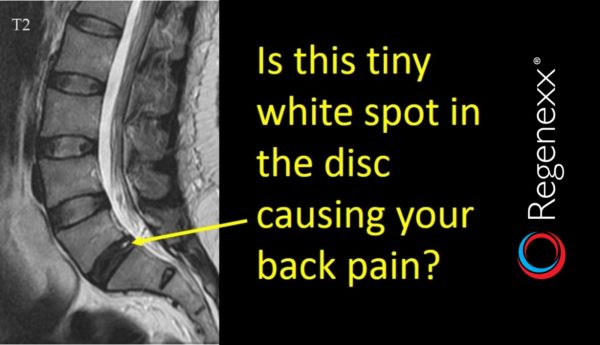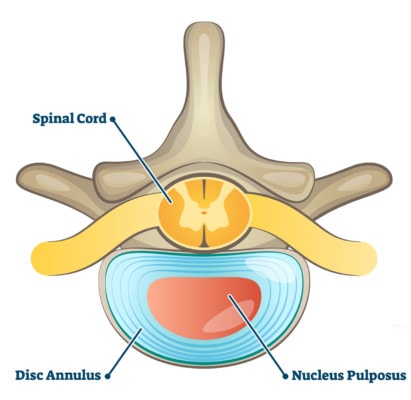What is a Disc High Intensity Zone on MRI?
You have low back pain and get an MRI performed and on the report it says you have a “high intensity zone” in one of your low back discs. What does a high intensity zone on MRI mean? Is it a big deal and is it causing your pain?

©Regenexx
The low back discs have an outer ring of tough fibrous tissue that surrounds an inner core of dense gel. That outside is called the annulus fibrosis or “annulus” for short, while the inside is called the nucleus pulposis or “nucleus” for short. The annulus can get small tears and these can be seen on These are often called “high intensity zones” (HIZ) and they indicate a tear in the disc annulus that could be painful.

VectorMine/Shutterstock
The big question for disc HIZs is whether we know through research that there’s good correlation between seeing this finding on an MRI and back pain. There have been a number of studies on this topic. A 2006 study looked at 142 discograms in 52 patients, 17 of which had HIZs. A discogram is when the doctor pokes a hole in the disc with a needle and injects into it, adding pressure to see if the disc is causing the patient’s low back pain. In this study, all 17 discs with HIZs caused pain on discography. However, other studies since 2006 have shown that HIZs can also be found in patients without low back pain. A very recent study sheds some light on why some studies show that HIZs are associated with back pain and others not-it may all be about the brightness of the HIZ.
The study looked at 72 patients with back pain and 79 without pain and did indeed find more than double the number of patients with back pain had HIZs when compared to the pain-free patients. However, a bit more than 20% of the patients without pain still had an HIZ. When looking at the properties of the HIZs in the back pain patients, the study authors found that they were very bright compared to the HIZs in pain free patients. Hence they concluded that bright HIZs were a better finding for the cause of low back pain than just seeing any HIZ on MRI.
The upshot? If you have an HIZ on your low back MRI, it’s probably causing some or all of your pain. If you have a bright HIZ, it’s more likely to be causing your pain. Do you need surgery? For these patients, we rarely recommend surgery, in fact, many times physical therapy will help. If it doesn’t, we’ve found that patients with HIZ often respond well to an injection of their own platelet rich plasma or stem cells into the disc.

NOTE: This blog post provides general information to help the reader better understand regenerative medicine, musculoskeletal health, and related subjects. All content provided in this blog, website, or any linked materials, including text, graphics, images, patient profiles, outcomes, and information, are not intended and should not be considered or used as a substitute for medical advice, diagnosis, or treatment. Please always consult with a professional and certified healthcare provider to discuss if a treatment is right for you.
